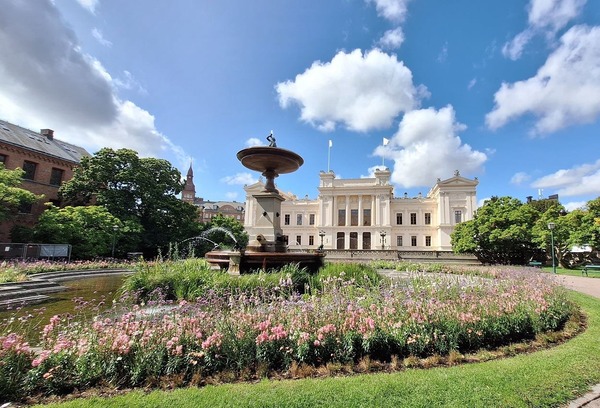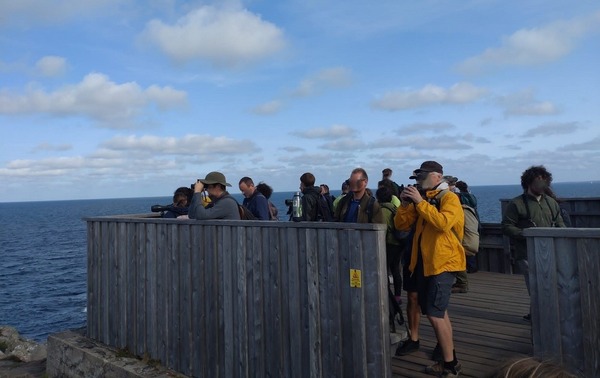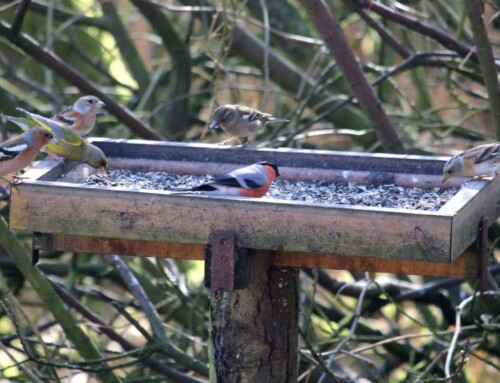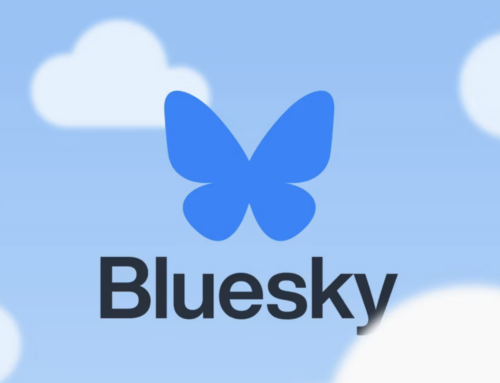October 2019
I was barely a third-year PhD student and attended a small in-person conference. Little did I know that it was going to be the last one in almost three years. In early 2020, as we all know, a new corona virus put the world in lockdown. Virtual conferences were organized, so sharing of science did not stop. Good things came out of the lockdown too, like reduced flight emissions (although the emissions started to skyrocket as soon as the travel restrictions loosened up). This pause however brought in a question of sustainability what it comes to scientific conferences. Why should hundreds of conference attendees, most often fly from around the world to a specific place for a few days, and then fly back? Especially as virtual conferences seemed to be somewhat successful.

Figure 1 Universitetshuset, University of Lund. Venue for the opening ceremony of 14th European Ornithologists’ Union Congress © Carina Nebel.
Sometimes remote attendance can be a perfect option to participate a conference (they do save time and money) but if we would permanently move the conferences to the online world, we would lose something absolutely invaluable: human interaction. Virtual coffee rooms do not enable chance meetings and asking questions/commenting on someone’s presentation can a bit awkward without being clearly able to follow facial expressions and gestures. Not to mention networking. Networking online is close to impossible for above mentioned reasons, but not only because of the above-mentioned reasons. In a virtual conference you do not get to have coffee in a group where you initially know only one person and end up having a potential post doc opportunity with a person working in a field you never even thought about before. In a virtual conference you cannot attend a spontaneous dinner, sit next to someone you kind of, but not really, know, and leave with a plan to apply together for a chance to organize a symposium in the next conference. For senior scientists, who do not need to network that much anymore, virtual conferences can be perfect as they allow sharing of the latest research with a minimal investment. But for early career researchers, to who networking is vital in order to establish their researcher careers, the end of in-person conferences would be a death sentence.

Figure 2 Conference attendees (faces blurred) on a bird watching platform during an excursion at Kullaberg Nature Reserve © Camilla Ekblad.
Happily, after all, Homo sapiens is a social species, so it is not surprising that in-person conferences have started again, as soon as it became possible. However, fortunately, the carbon-footprint of conference air travel has not been forgotten, and trains are becoming increasingly popular in within-continent travels. And then there are societies like the BOU, which help their members to travel sustainably to conferences by granting attendance assistance when traveling is low on carbon emissions. This year I was one of those lucky ones to receive this grant. My choice of locomotion was a low consuming car that I shared with a friend who was attending the same conference (and my partner, to who the trip was a vacation).

Figure 3 Poster for the EOU congress, featuring a rook (Corvus frugilegus), one of the signature birds of the congress © Carina Nebel.
August 2023
I was barely a third-year Post Doc and attending one of the first in-person conferences after the pandemic, the EOU congress in Lund, Sweden. I really enjoyed the event and seeing so many friends, colleagues, and collaborators after such a long time. All these familiar encounters made me to reflect on my very first conferences and how my experiences in them were totally different. I still remember my first international conference as a fresh PhD student, that was IOC in August 2018, where I did not know anyone besides some people from the same department. I used to look around and watch others during coffee breaks and how they mingled in the room, talking with different people, easily greeting others passing by. And I wondered how on earth did they know all these people. And now, I hadn’t stopped talking with familiar (and unfamiliar) faces and still I catch myself apologizing to someone on the last day of the conference “Sorry, I must go, there’s someone there I want to talk with but haven’t had a chance yet”. Without even realizing it, I had become a mingler. I am not the most extrovert person around, so I wondered what has happened in the past five years to get me here.
First of all, I was lucky enough to have a PhD supervisor who always introduced me to people during conferences and other events (So, I plead with all the current and future supervisors: do not leave your student alone and use your connections to give them connections!). Then I noticed that once I knew some people, it was easier to join groups where they were, and that way introduce myself to the others as well. Although sometimes it was very unnerving to start a conversation with someone you hadn’t met before, especially if their name was more than familiar to you due to all their publications you have read. At first I was also easily startled by the common question “What are you working on?” and started thinking in the moment if I should say something really general or details from specific studies. But once I made the little effort to come up with a concise but informative description about what I am actually working on, I have felt much more at ease in new social situations. Although I am still eager for more networking, my network has already offered me collaborations, possibilities to design projects, symposiums to organize, a chance to be a guest editor in a special issue for a journal, and of course unforgettable evening get-togethers, among other things. And most of this would have not happened without in-person conferences.





